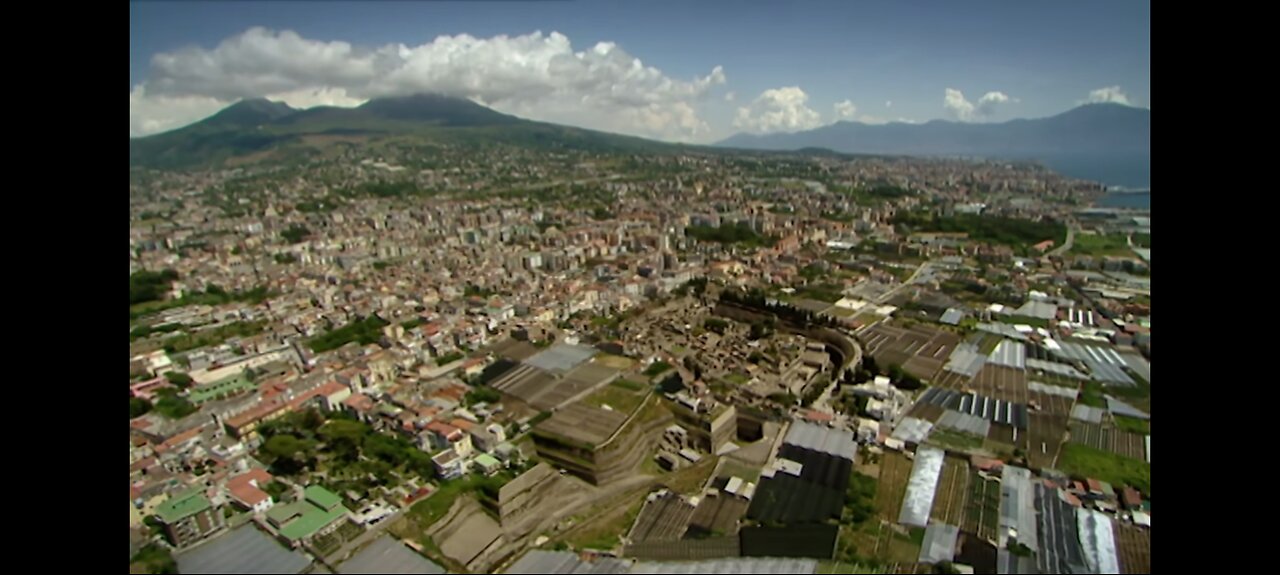Premium Only Content

Pompeii, the lost Roman city
Pompeii, the lost Roman city buried by the eruption of Vesuvius in 79 AD, has long been a source of fascination to archaeologists. But its sister city Herculaneum, buried in the same eruption but to a much greater depth than Pompeii, reveals far more detail of how the Romans lived. For many years the city appeared to have been abandoned and it was assumed the inhabitants had managed to escape in the hours before Herculaneum was engulfed by the volcano.
Then in the 1980s a macabre discovery was made. Burrowing through the volcanic mud, archaeologists found hundreds of bodies huddled pitifully together. Vesuvius is still active and is on course to erupt again. The lure of its rich volcanic soil and the delights of the Bay of Naples have attracted a far greater population than lived there in Roman times. And while civil servants at the Vesuvius observatory express confidence that there will be ample warning and time to evacuate the surrounding population, many geologists disagree. Evidence from an eruption in 4000 BC reveals that the volcano is capable of destroying Naples, a cataclysm far greater than that of 79 AD. If that were to happen today it could engulf 3 million people. On that scale, in an area where motorway traffic jams are a fact of daily life, present evacuation plans are completely inadequate.
-
 LIVE
LIVE
Bitcoin Magazine
3 days agoThe Bitcoin Conference 2025 | Day 3 Livestream
1,083 watching -
 1:11:04
1:11:04
Michael Franzese
4 hours agoThis Is What Keeps Me Going After All These Years
16.2K4 -
 46:26
46:26
Kimberly Guilfoyle
3 hours agoRighting the Left's Wrongs, Plus Big News on Biden Coverup | Ep225
10.7K6 -
 34:56
34:56
Candace Show Podcast
2 hours agoElon Musk, Secret Underground Bases, & UFOs | Candace Ep 191
11.7K58 -
 LIVE
LIVE
LFA TV
19 hours agoLFA TV LIVE STREAM - THURSDAY 5/29/25
2,330 watching -
 33:56
33:56
THE Bitcoin Podcast with Walker America
5 hours ago $3.26 earnedTHE Bitcoin Podcast LIVE at THE Bitcoin Conference (Vegas 2025)
15K -
 37:18
37:18
Stephen Gardner
2 hours ago🔥Democrat Jasmine Crocket REVEALS plan to RUIN TRUMP!
15.6K10 -
 1:24:04
1:24:04
Roseanne Barr
4 hours agoTales From The Other Side w/ Darius J. Wright| The Roseanne Barr Podcast #101
38K15 -
 2:15:45
2:15:45
The Quartering
5 hours agoNancy Pelosi Exposed, DOOM Bombs, Sydney Sweeny Bathwater For Sale & Bongino ABSURD Epstein Update
181K41 -
 LIVE
LIVE
Dr Disrespect
8 hours ago🔴LIVE - DR DISRESPECT - WARZONE - NEW SEASON 4!
1,831 watching